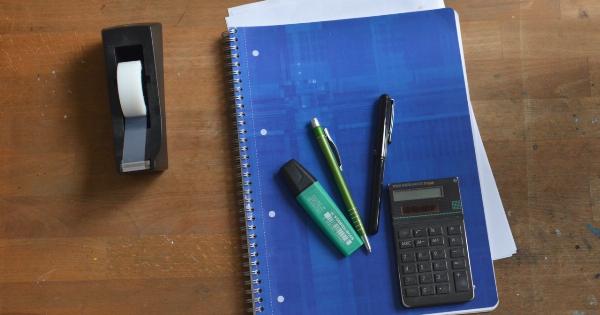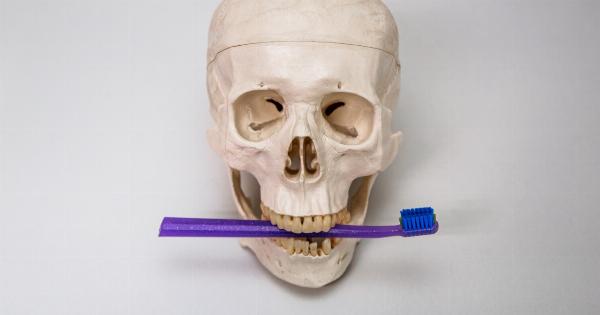Back pain and headaches are two very common complaints that many people deal with on a regular basis. While they may seem like separate issues, there is often a strong connection between the two.
In fact, research shows that people who suffer from chronic headaches are more likely to experience back pain, and vice versa. This article will explore the relationship between back pain and headaches, their common causes, and ways to find relief for both.
Causes of Back Pain and Headaches
1. Muscle Tension:.
Both back pain and headaches can be caused by muscle tension. When the muscles in your back or neck are tense, it can lead to pain in those areas as well as trigger headaches. Stress, poor posture, or injuries can all contribute to muscle tension.
2. Poor Posture:.
Using improper posture while sitting or standing can put strain on your back and neck muscles, which can eventually lead to both back pain and headaches.
Slouching or hunching over a desk can create tension in the muscles and affect the alignment of your spine.
3. Spinal Misalignment:.
A misalignment of the spine can cause both back pain and headaches. When your spine is not properly aligned, it can put pressure on the surrounding nerves, resulting in pain that radiates from the back to the head.
4. Nerve Irritation:.
In some cases, nerve irritation can be the cause of both back pain and headaches. The nerves in your spine are interconnected, so if one nerve is irritated or compressed, it can send pain signals to other areas, including the head.
5. Lifestyle Factors:.
Certain lifestyle factors can contribute to both back pain and headaches. Lack of exercise, poor diet, inadequate sleep, and excessive stress can all increase the risk of experiencing these symptoms.
How Back Pain and Headaches are Connected
1. Shared Nerve Pathways:.
The nerves that transmit pain signals from the back also pass through the same pathways that transmit pain signals from the head. As a result, pain signals can be easily transmitted from one area to the other, leading to both back pain and headaches.
2. Muscle Tension and Trigger Points:.
Muscle tension in the back or neck can create trigger points, which are tight knots that can refer pain to other areas. These trigger points can radiate pain into the head, causing headaches.
Similarly, tension headaches can cause tightness in the neck and upper back muscles.
3. Central Sensitization:.
In some cases, chronic pain conditions can lead to central sensitization, which is an increased sensitivity to pain signals.
This heightened pain perception can result in both back pain and headaches, as the body becomes more sensitive to various stimuli.
Treatment and Relief
1. Physical Therapy:.
Physical therapy can be helpful in addressing both back pain and headaches. A trained physical therapist can provide exercises and stretches to strengthen the muscles, improve posture, and alleviate pain in both areas.
2. Chiropractic Care:.
Chiropractic adjustments can help correct spinal misalignments and relieve nerve irritation, which can help alleviate both back pain and headaches. Regular chiropractic care can also help improve overall spinal health and prevent future issues.
3. Stress Management:.
Since stress is a common trigger for both back pain and headaches, learning stress management techniques can be beneficial.
Practices such as meditation, deep breathing exercises, and regular relaxation can help reduce stress levels and minimize the occurrence of both symptoms.
4. Correcting Posture:.
Practicing good posture is crucial to prevent both back pain and headaches. Using ergonomic chairs, maintaining proper sitting and standing posture, and taking breaks to stretch and move are all important in reducing the risk of these symptoms.
5. Exercise and Movement:.
Engaging in regular exercise and physical activity can help strengthen the muscles, improve flexibility, and enhance overall health. It is important to choose exercises that are gentle on the back and neck, such as swimming, walking, or yoga.
When to Seek Medical Attention
While most cases of back pain and headaches can be managed with at-home treatments and lifestyle adjustments, there are instances where seeking medical attention is necessary. It is important to consult a healthcare professional if:.
– The pain is severe and persistent.
– The pain is accompanied by other concerning symptoms.
– The pain is a result of an injury or accident.
– The pain is affecting your daily activities and quality of life.
A healthcare provider can properly diagnose the underlying cause of the symptoms and recommend appropriate treatment options.
Conclusion
Back pain and headaches often go hand in hand, and understanding the connection between the two can help in finding effective treatment and relief.
Whether it is muscle tension, poor posture, spinal misalignment, nerve irritation, or lifestyle factors, addressing the root causes can significantly reduce the frequency and intensity of both back pain and headaches. By incorporating proper self-care, seeking appropriate medical attention when needed, and making necessary lifestyle changes, individuals can enhance their overall well-being and lead a life with reduced pain and discomfort.






























